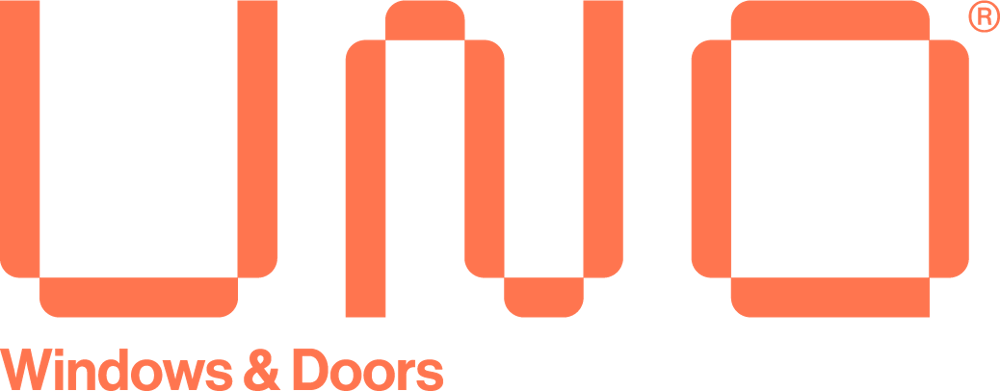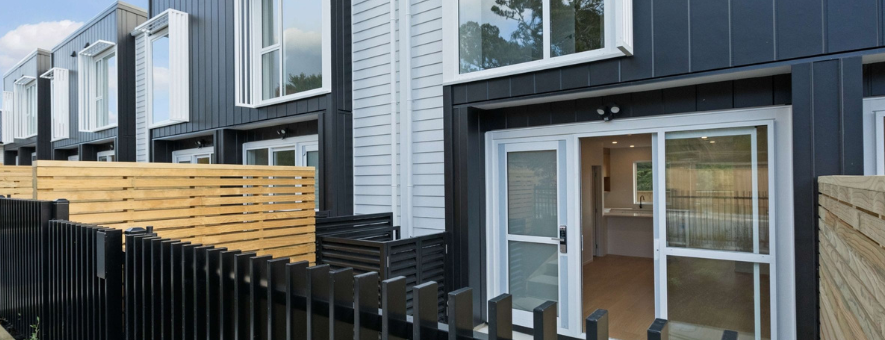Are you considering thermally broken windows for your next project? While they are more expensive upfront, the benefits are well worth it. The problem is, you need your clients to be on the same page.
In this article, we’ve made it simple and stripped away all the industry jargon. That way, you can communicate with your clients just how worthwhile thermal windows are, in a way that makes sense to them.
What are thermally broken windows?
Regardless of how effective the glass insulation is, a window can lose a significant amount of energy through its frame. To counter this, thermally broken window frames have an insulated barrier made of reinforced polyamide, a type of plastic. The polyamide is incredibly heat resistant and stops heat from transferring in and out. That way, far less energy is required to maintain a comfortable temperature inside the building.
Put as a simple illustration, the thermal insulator in the aluminium window frame acts in a similar way to double glazing, but for the window frame rather than the glass. To make the investment in high-performance glass worthwhile, you also need to invest in the frame too.
The benefits of thermally broken windows
Whether they are a homeowner or developer, tell your clients about these nine advantages of thermally broken windows:
1. Compliance with H1 standards
When the H1 Energy Efficiency Standards were updated in 2022, the R-value requirements were increased in all six local climate zones. Fortunately, combining Low-E, argon-filled double glazing with thermally broken frames can give an R-value of up to R0.8. That’s enough to exceed the new standards in every zone.
If you combine it with triple glazing it can reach as high as R1.0, much better than traditional double glazing’s R0.26. By factoring these into your plans early, the compliance process will be much simpler for you and your clients.
2. Reduced condensation
Aluminium window frames are known for condensation because the moisture in the air hits the cold metal and forms droplets. This can be a headache to manage, as well as a health concern, especially when it leads to mould. Fortunately, a thermal break in the frame reduces the likelihood of condensation forming, keeping the home warm and dry.
It is important to consider things like drying your washing inside and how much moisture is produced from those activities, which also causes condensation. It must be noted that thermally broken window frames alone are not enough to eliminate condensation — adequate heating and ventilation are also critical to this end.
3. Sustainable energy use
The new H1 standards are projected to reduce energy use by up to 40% and help New Zealand toward its goal of net-zero carbon emissions by 2025. And with environmental concerns and the cost of energy so high, building an energy-efficient house is on the minds of every architect, builder, developer, and homeowner. Thermally broken windows prevent heat from escaping outside, making the room temperature much easier to maintain.
4. Healthier homes
According to 2018 Census data, 318,891 homes are affected by dampness and 252,855 have visible mould. Mould and dampness impact the health of a building’s occupants, with links to asthma, allergies, skin rashes, and serious respiratory problems. To protect your clients and anyone living in the new home, thermally broken windows are a wise solution. With more affordable energy bills and reduced condensation, your client’s home will be much healthier.
5. Higher property values
Increasingly, buyers are looking for energy-efficient homes with lower utility costs. Whether the house is sold now or in the future, thermally broken windows will likely raise the market value and attract more buyers. Typically, buyers don’t mind paying a little extra for comfort, durability, and quality.
6. Cost savings
With lower energy usage to heat and cool the home, your clients will save significantly on ongoing utility bills. Over time, these savings will outweigh the initial cost of the thermally broken frames. With the low-use electricity charges now scrapped by the Government, resulting in annual increases of hundreds of dollars added to the average power bill, clients will see this as a significant selling point.
It should also be noted that the best place for the window to be situated is in line with the insulation (known as ‘recessed window’ installation) as this position is the most effective in reducing power bills.
7. Various powder coat finishes
With aluminium joinery, there are our seven most popular key powdercoat colours, along with a range of other colours to choose from. This means your windows can be a stylish addition to the home’s aesthetic, creating either a striking contrast or a seamless match with the cladding and interior. At UNO Windows & Doors, our frames are powder coated in Interpon D1010 Premium.
8. Sound insulation
Besides heat, sound can also be transferred through aluminium frames. This is a major concern for many homeowners, especially in medium-density or urban housing. Fortunately, a thermal break helps to deaden sound transfer, maintaining a feeling of privacy and calm for residents. Whether it be traffic, pets, neighbours or general household noise, your clients will welcome the separation of inside and out.
9. Low-maintenance windows
When it comes to installing windows, it is critical to think about the longevity of the materials used. For that reason, aluminium is one of the most common materials used across New Zealand, outlasting most other alternative materials. It is resistant to rust, won’t swell, and will last for decades with very little upkeep required. With a thermal break incorporated into the frame, the need for cleaning and managing condensation is also greatly reduced.
How to explain the value of thermally broken windows
When working with your client, there are three key steps you can take to demonstrate the value of thermally broken windows.
-
First of all, calculate the energy savings and cost savings over time. Once they see the upfront cost compared to the ongoing savings, thermally broken windows will be a no-brainer.
-
Secondly, specify thermally broken window units in the early planning stages. This allows your clients to budget for them and get their heads around the investment.
-
Finally, align the benefits with their needs. Do they want a quiet home, a warmer home, or a future-proofed home? All of these can be achieved, in part, by specifying thermally broken windows over standard aluminium frames.
If you are an architect, developer, or builder with a new project in the works, the team at UNO Windows & Doors can help. We know the value of thermally broken frames, and can help you convey that to your clients.
Not only will the windows be more durable and energy-efficient, but you’ll also be well-prepared for the compliance process. For more tips on how to design energy-efficient windows into your buildings, contact the team, download the DWGs, or browse the range of quality windows and doors today.




